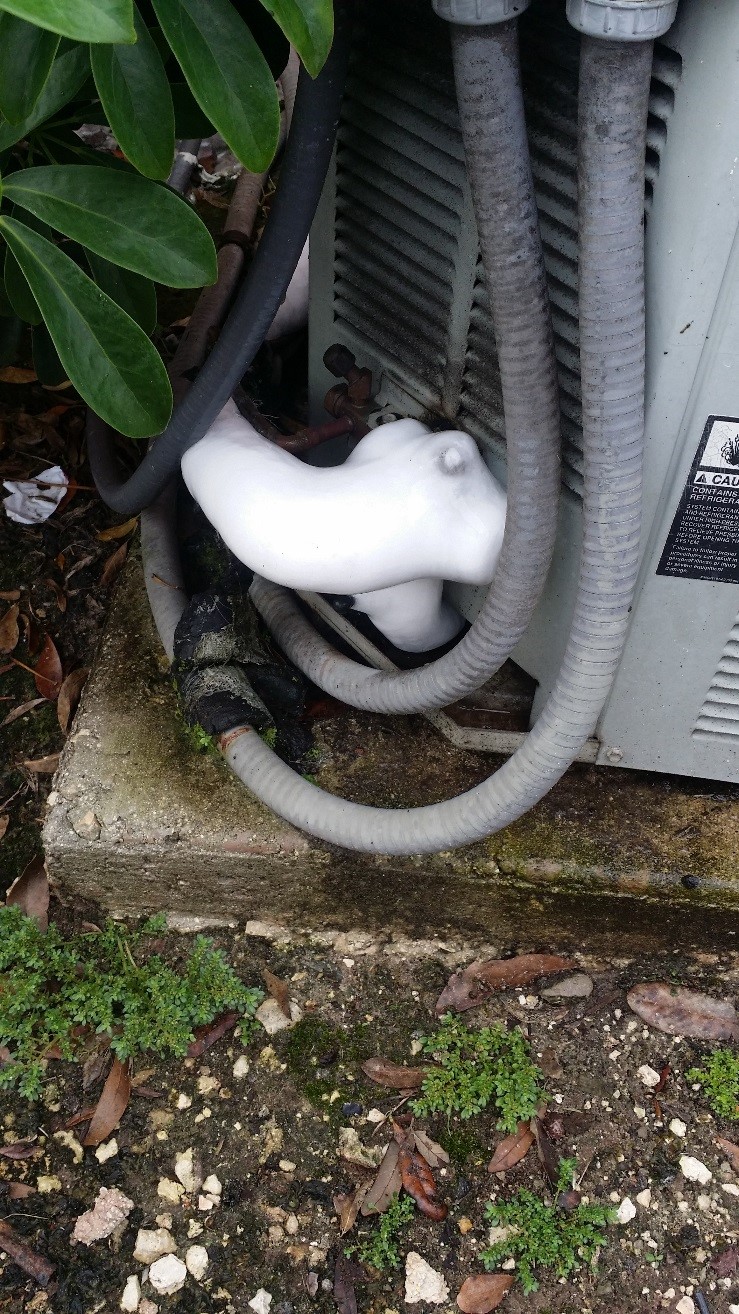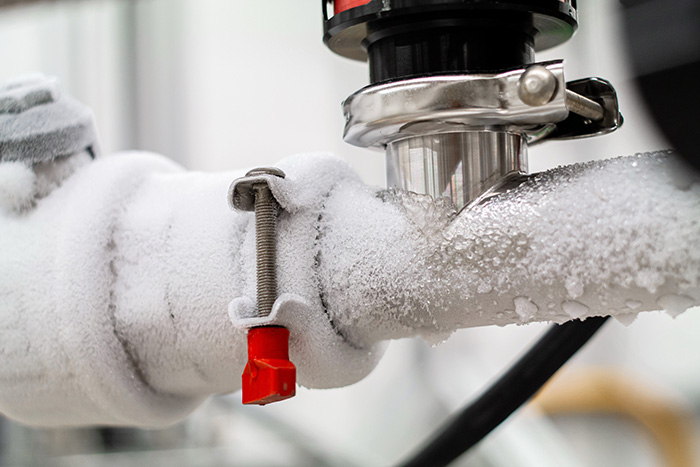This post which follows about Air Conditioner Frozen? How To Fix your Frozen AC Line is exceptionally compelling. Don't overlook it.

Intro
Uncovering that your air conditioning pipeline is frozen can be concerning, especially throughout warm summer months when you rely upon your ac system the most. Recognizing what to do in such a circumstance is essential to prevent additional damage to your air conditioning system and ensure your convenience inside your home.
Understanding the Causes
Numerous factors can add to the freezing of an air conditioning pipeline. Understanding these reasons can assist you address the problem successfully.
Absence of Airflow
One usual root cause of an icy air conditioning pipeline is inadequate airflow. When the air flow over the evaporator coil is restricted, it can create the coil to drop below freezing temperature level, causing ice development on the pipe.
Reduced Refrigerant Levels
Insufficient refrigerant degrees in your a/c system can also cause a frozen pipeline. Reduced refrigerant degrees can cause the stress in the system to go down, leading to the freezing of wetness on the evaporator coil.
Winter Conditions
In chillier environments, freezing temperatures outside can add to the cold of air conditioning pipelines. If your AC system is not correctly protected or if there are leaks in the ductwork, chilly air can infiltrate the system, creating the pipeline to freeze.
Dirty Air Filters
Filthy or clogged air filters can limit air movement in your air conditioning system, bring about various issues, consisting of an icy pipe. It's necessary to replace or clean your air filters routinely to make sure proper air flow and avoid ice accumulation.
Indicators of a Frozen Air Conditioner Pipe
Recognizing the indications of an icy a/c pipeline is essential for punctual action.
Decreased Airflow
If you discover a considerable decline in air movement from your vents, it can indicate an icy pipeline.
Ice Buildup on the Pipe
Noticeable ice accumulation on the cooling agent line or the evaporator coil is a clear indication of a frozen a/c pipeline.
Weird Sounds from the Unit
Uncommon sounds, such as hissing or bubbling, coming from your air conditioning system can signify that there's ice present on the pipeline.
Immediate Actions to Take
When confronted with an icy air conditioning pipeline, it's vital to act rapidly to stop more damages to your air conditioning system.
Turning off the air conditioner
The first step is to turn off your ac unit to stop the system from running and worsening the issue.
Checking for Blockages
Inspect the area around the indoor system for any kind of blockages that might be blocking air movement, such as furniture or drapes.
Defrosting the Pipe
You can utilize gentle methods like placing towels taken in cozy water around the icy pipe to help thaw it gradually.
Safety nets
Taking preventive measures can assist avoid future occurrences of an icy a/c pipeline.
Regular Maintenance Checks
Set up routine maintenance consult a professional HVAC professional to make sure that your air conditioning system is running successfully.
Altering Air Filters
On a regular basis replace or clean your air filters to prevent air flow constraints and preserve ideal efficiency.
Protecting Exposed Pipes
If your air conditioning pipelines are exposed to cool temperature levels, think about insulating them to avoid freezing throughout winter months.
Looking For Professional Help
If DIY techniques stop working to solve the concern or if you're uncertain regarding just how to continue, it's best to seek help from a certified HVAC professional.
When DIY Methods Fail
If your attempts to thaw the pipe or address other issues are not successful, it's time to contact a professional.
Value of Hiring a Professional HVAC Technician
A certified HVAC professional has the expertise and devices essential to diagnose and repair concerns with your air conditioner system safely and successfully.
Conclusion
Handling an icy AC pipe can be a discouraging experience, however recognizing how to respond can aid reduce damages and restore comfort to your home. By recognizing the reasons, recognizing the indications, and taking punctual action, you can efficiently address the problem and stop future occurrences.
Frozen AC Line: Why It Happens & What To Do About It
A frozen AC line can be a rather peculiar sight in a place like Phoenix, Arizona where nothing ever freezes. In this post, we’ll discuss what makes an air conditioner line frozen – and what you can do about it.
Dirty Air Filters
Did you know that you should be cleaning or replacing your air filters on a monthly basis? Failing to do this can result in airflow issues that, in turn, cause your evaporator coils and lines to freeze over. You’ll notice a buildup of ice on both components, although the buildup on your pipes will, of course, be more evident unless you open your air condition up to reveal the coils.
What To Do About It
Give your air filter a good cleaning if it’s reusable. If not, replace the filter outright. Next, switch your air conditioner’s fan setting on and leave it there for 2-3 hours. This will draw warm air in, helping to thaw your evaporator coil. You can also check out this article for some tips on cleaning the coils themselves if you’d like to speed the process up. Before you switch the unit back to its normal state, make sure the supply vents are completely unobstructed and free of dust or other debris.
If you keep having this issue even after replacing your filters regularly, contact a local HVAC repair company and have them inspect your evaporator coil, ductwork, and any other components that may be at fault. If you live in the Phoenix, Arizona area, give American Home Water and Air a call.
Low Refrigerant Levels/Leakage
What To Do About It
Contrary to what air conditioner “recharge” companies often tell their clients about refrigerant, it should never need to be simply refilled. You see, refrigerant runs in what experts refer to as a “closed loop.” Refrigerant really shouldn’t be leaving that loop. If it is, you’ve got a leak.
Paying someone to come and pump more refrigerant into your system (aka “recharge” it) isn’t the solution. Doing that will simply kick the can down the road. Besides, refrigerant leaks can be harmful to the environment and people in your home.
Rather, you need to take care of the leak with the help of a technician. Check out this article for some more information about dealing with air conditioners that are leaking refrigerant. Before you contact a technician, switch your thermostat to the off position. Then, switch the fan setting on and let it run for 2-3 hours so the unit can thaw.
Improper Temperature Setting
Improper temperature settings can also cause a drop in your air conditioner’s pressure. What many people don’t realize is that air conditioners are actually designed to run when temperatures have fallen above roughly 60 degrees Fahrenheit. If you run the unit when it’s cold outside, you’ll run into many issues, including frozen components.

I recently found that write up about What Do I Do If My AC Pipe Is Frozen when browsing on the web. Please set aside a second to promote this entry if you enjoyed reading it. Many thanks for taking the time to read it.
Book Service
Comments on “Frozen AC Pipe - Identifying and Fixing the Issue Promptly”